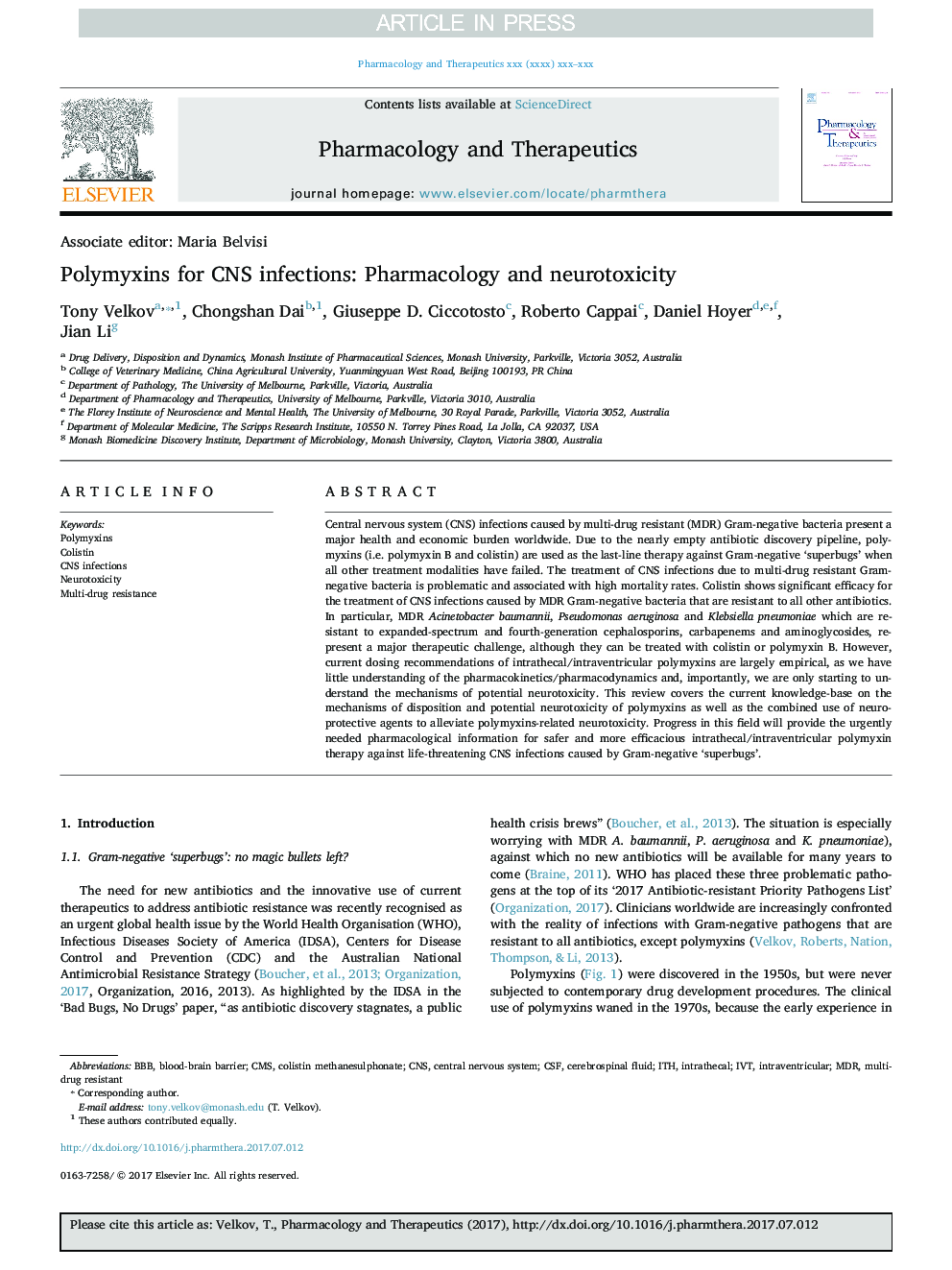| Article ID | Journal | Published Year | Pages | File Type |
|---|---|---|---|---|
| 8536972 | Pharmacology & Therapeutics | 2018 | 6 Pages |
Abstract
Central nervous system (CNS) infections caused by multi-drug resistant (MDR) Gram-negative bacteria present a major health and economic burden worldwide. Due to the nearly empty antibiotic discovery pipeline, polymyxins (i.e. polymyxin B and colistin) are used as the last-line therapy against Gram-negative 'superbugs' when all other treatment modalities have failed. The treatment of CNS infections due to multi-drug resistant Gram-negative bacteria is problematic and associated with high mortality rates. Colistin shows significant efficacy for the treatment of CNS infections caused by MDR Gram-negative bacteria that are resistant to all other antibiotics. In particular, MDR Acinetobacter baumannii, Pseudomonas aeruginosa and Klebsiella pneumoniae which are resistant to expanded-spectrum and fourth-generation cephalosporins, carbapenems and aminoglycosides, represent a major therapeutic challenge, although they can be treated with colistin or polymyxin B. However, current dosing recommendations of intrathecal/intraventricular polymyxins are largely empirical, as we have little understanding of the pharmacokinetics/pharmacodynamics and, importantly, we are only starting to understand the mechanisms of potential neurotoxicity. This review covers the current knowledge-base on the mechanisms of disposition and potential neurotoxicity of polymyxins as well as the combined use of neuroprotective agents to alleviate polymyxins-related neurotoxicity. Progress in this field will provide the urgently needed pharmacological information for safer and more efficacious intrathecal/intraventricular polymyxin therapy against life-threatening CNS infections caused by Gram-negative 'superbugs'.
Keywords
Related Topics
Health Sciences
Pharmacology, Toxicology and Pharmaceutical Science
Pharmacology
Authors
Tony Velkov, Chongshan Dai, Giuseppe D. Ciccotosto, Roberto Cappai, Daniel Hoyer, Jian Li,
